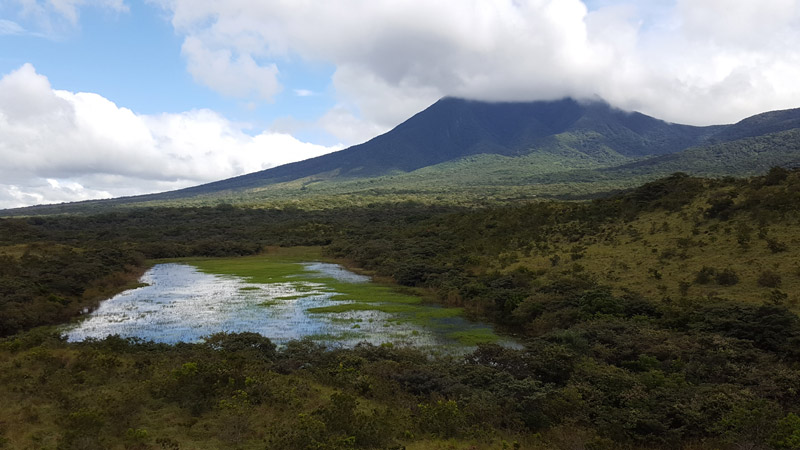“Lying beneath an old-growth forest, in the shadow of an dormant volcano, with daily rainbows and spectacular sunsets over the Pacific — and at least six good streams within an easy walk in either direction — Maritza Biological Station is a stream ecologist’s dream.”
— Stroud Center Distinguished Research Scientist Bern Sweeney, Ph.D.

Thousands of miles and a continent away from the Stroud Center’s main location in Avondale, Pennsylvania, our Maritza Biological Station (Estación Biológica Maritza) in Costa Rica has a visitor. The tapir is Latin America’s largest land mammal, and although it looks a bit like a wild boar, it is actually related to horses and rhinoceroses!
This nocturnal animal is often caught on wildlife cameras making nighttime visits to Maritza, but Field Station Manager Rafa Morales Cueto filmed a tapir on a rare daytime visit. Watch this special animal enjoy the rain while swimming in Río Tempisquito.
According to the Tapir Specialist Group of the International Union for Conservation of Nature, “Tapirs shape and maintain the biodiversity of tropical ecosystems; without them, there would not be the same rich variety of animals and plants there. They are known as an ‘umbrella species’ because they have a wide-ranging habitat that also includes wild cats, monkeys, deer, and many varieties of birds and reptiles. If we protect their habitat, the habitat of many other animals is also protected.”
To view more wildlife caught on film at Maritza, visit our YouTube playlist of Costa Rican wildlife!



